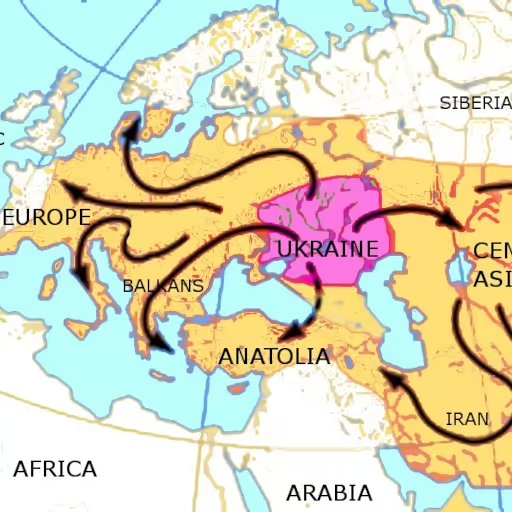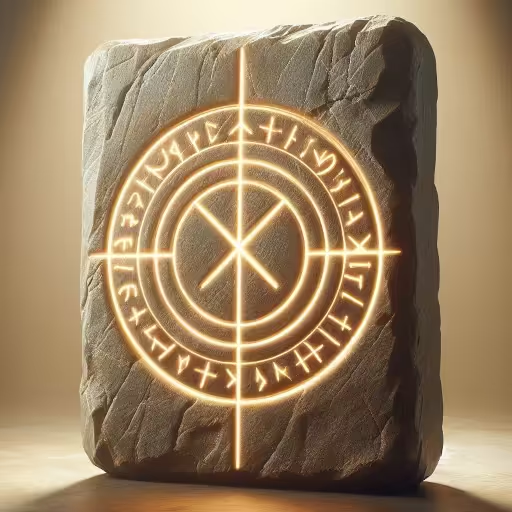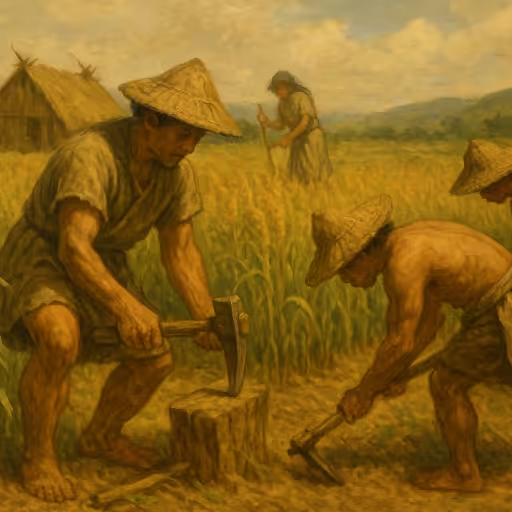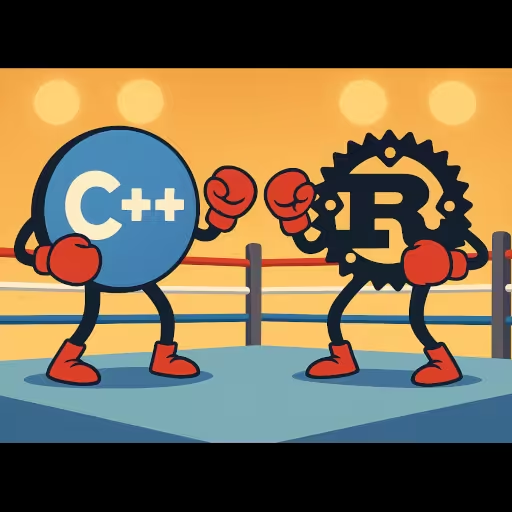History of Proto-Indo-European Gender
This article summarizes and evaluates what is commonly accepted about the history of Proto-Indo-European (PIE) gender and how it likely evolved, with a short critical comparison of competing explanations. We take as touchstones (i) Silvia Luraghi’s peer-reviewed study, The origin of the Proto-Indo-European gender system: Typological considerations, and (ii) the concise, standard reference summary in the Wikipedia entry on PIE morphology.
The baseline consensus—reflected in most handbooks and in Wikipedia—is that late PIE had three grammatical genders (masculine, feminine, neuter), probably derived from an older two-gender system (animate/common vs. neuter/inanimate) like the one still attested in Anatolian. In that system, neuter nouns collapsed nominative/vocative/accusative, and their nom/acc plural used a special collective suffix -h₂ (continuing as -a in many daughters). A widely repeated line further claims that extended forms (-eh₂/-ih₂) created feminine nouns* from other stems. (Wikipedia)
Luraghi agrees on the two-gender → three-gender trajectory but challenges the mechanism: she argues the neuter plural in -h₂ and the rise of the ā-stem feminine (-eh₂) reflect two independent morphological developments, not a single “collective → feminine” semantic path. Typologically, if a system starts from an animacy split, the most plausible next distinction is sex, i.e., a split inside the animate class; only later does a fully paradigmatic feminine gender crystallize (first in demonstratives, then in adjectives). Anatolian fits this cleanly: it retains the neuter plural in -h₂ but never shows a feminine gender.
In what follows, we keep the review practical: we outline the shared core (two-gender origin, late three-gender spread, neuter plural -h₂), highlight where Luraghi’s typological account departs from the collective-to-feminine interpretation, and illustrate late-PIE agreement using familiar reconstructed patterns (e.g., só/séh₂/tód; -os : -eh₂ : -om), before briefly noting how much of this survived—often in simplified form—across the modern Indo-European family. (Wikipedia)
Overview and Summary of Luraghi’s Origin of the Proto-Indo-European Gender System (2011) Paper
Luraghi argues that Proto-Indo-European (PIE) originally had a two-gender, animacy-based system—animate vs. inanimate—signaled morphologically by the absence of nominative/accusative endings on inanimates, with two distinct demonstratives (*so for animate, *to for inanimate). The familiar three-gender (masc—fem—neut) system is later, and the feminine did not arise from “collectives → feminine.” Instead, the key suffix *-h₂ underwent two independent developments: (i) to the neuter nom/acc plural via collectives, and separately (ii) to an ā-stem inflectional class that became the feminine marker. Because Anatolian preserves the neuter plural in *-h₂ but lacks any feminine, the two pathways must be independent; no chronology from collective → feminine is required. This resolves the long debate (Schwund- vs. Herkunftshypothese) provoked by Hittite’s two-gender system.
Mechanistically, agreement preceded gender for adjectives (adjectives started as appositional nouns). In the two-gender stage, demonstratives simply patterned with the animacy split; gender markers were not needed. The feminine emerged when the animate demonstrative (*so) was expanded with *-h₂ to create a feminine demonstrative series, and adjective paradigms followed analogically (especially the first-class adjectives with -ā). Only then do we see the fully paradigmatic, three-way agreement summarized in Luraghi’s Figures 1—2. Crucially, the split that created the feminine was a split inside the animate class, motivated by sex (referential male/female) rather than by degrees of individuation or “abstract/collective” semantics.
Typologically, Luraghi critiques reconstructions that posit an intermediate, non-sex-based three-gender system (e.g., inanimate mass vs. inanimate count plus animate). Cross-linguistic evidence (WALS features 30 & 31) shows that languages with more than two genders but no sex distinction are rare and heavily concentrated in Niger-Congo (and a few areal cases), typically reflecting grammaticalized classifier systems; by contrast, when a system grows out of an animacy split (like PIE), the only plausible motivation for a third gender is sex. Thus the PIE feminine is best seen as a sex-based innovation layered onto an older animate/inanimate architecture—not as a reanalysis of “collectives” into feminine.
On function, Luraghi distinguishes “gender from above” (classifiers → demonstratives → determiners → agreement) from “gender from below” (agreement crystallizing from pre-existing differential case-marking and demonstrative contrasts). PIE is the latter: gender’s primary function there is referent tracking in discourse (keeping male/female humans distinct at the top of the animacy hierarchy), with classification only secondary. The derivational role of gender (e.g., later Romance gender motion pairs like ragazzo/ragazza) is secondary and later, unlike Bantu-type systems where noun classes drive lexical derivation.
Snapshot table (after Luraghi’s Table 2)
| Dimension | Gender from above (classifier-based) | Gender from below (PIE-like) | |
|---|---|---|---|
| Typical pathway | Classifiers → demonstratives → determiners → agreement | Differential case/inflectional patterns → demonstratives align → agreement | |
| Usual number of genders | Often many | Minimal (2), later +1 by sex | |
| Overt gender morphology | Regularly present | May be absent initially (pattern is in endings/zero) | |
| Primary function | Classification | Referent tracking (discourse) |
Key references within the article: Brugmann (1888/1891) on early PIE and the -ā/-h₂ morphology; Meillet (1921, 1931) on case patterns and demonstratives; Corbett (1991, 2011 WALS chs. 30—31) on gender typology and sources; Greenberg (1978) on classifier-to-agreement pathways; Aikhenvald (2000/2004/2006) on classifiers and noun classes; critiques of collective-to-feminine scenarios (e.g., Tichy 1993; Matasović 2004).
Wikipedia Entry on PIE Gender
Short answer: yes—Luraghi’s account and the Wikipedia blurb agree on the big picture (late PIE has three genders; earlier PIE had an animate vs. inanimate split; Anatolian shows only the older two-way system), but they differ on the mechanism that created the feminine. Wikipedia tersely says the feminine “arose later” when the neuter collective suffix *-h₂ (and its extended -eh₂/-ih₂) came to form feminine nouns; i.e., feminine out of a collective/abstract morphology that also supplies the neuter plural in *-h₂ (→ Gk/Lat neuter pl. -a) (see the passage you quoted). Luraghi argues this widely repeated story is morphologically unnecessary and typologically weak: the two developments of -h₂ are independent—(i) a derivational suffix becomes the neuter nom/acc plural ending (-h₂) and (ii) separately, -eh₂ becomes the theme vowel of the ā-stems and the marker of the feminine inflectional class. In short, you don’t need (and shouldn’t posit) a semantic path “collective → feminine.” Instead, the feminine emerges by a sex-based split inside the animate class; only later do those nouns standardize as a feminine gender that triggers agreement (first with demonstratives, then adjectives). Crucially, Anatolian lacks feminine but has neuter *-h₂ plurals—exactly what you’d expect if the two changes were unrelated.
History of Proto-Indo-European Grammar
Points of agreement: both accounts accept that the three-way gender system (masc/fem/neut) is late PIE; that earlier PIE distinguished animate vs. inanimate (neuter); that neuter nom/voc/acc were syncretic; and that PIE neuter nom/acc plural used *-h₂ (> Gk/Lat -a). Luraghi also emphasizes the demonstrative layer: late PIE had a gendered demonstrative set só (m.), séh₂ (f.), tód (n.), with clear reflexes in the old languages (e.g., Greek article ὁ, ἡ, τό). That makes the “agreement first with demonstratives” pathway concrete. (Semantic Scholar, Wiktionary)
Proto-Indo-European Language Examples
Here are compact, reconstructed late-PIE examples that illustrate the system and its evolution:
| Category | PIE forms (m / f / n) | What it shows | Representative reflexes |
|---|---|---|---|
| Demonstratives | só / séh₂ / tód | Late-PIE three-way gender in pronominals; the feminine marker is -h₂ | Gk ὁ/ἡ/τό; Ved. sá/sā/tád; Goth. sa/so/þata. (Semantic Scholar, Wikipedia) |
| “o/ā-stem” adjective ‘new’ | néw-os / néw-eh₂ / néw-om | The standard o-/ā-/o- pattern: masc -os, fem -eh₂ (ā-stem), neut -om | Lat novus/nova/novum, Gk νέος/νέα/νέον, Ved. navá-/navā/; PIE néwos is standardly reconstructed. (Wiktionary, Wikipedia) |
| Neuter noun ‘yoke’ | — / — / sg yug-óm, pl yug-éh₂ | Neuter syncretism (nom=acc) and neuter plural -h₂ > -a | Lat iugum/iuga, Gk ζυγόν/ζυγά; PIE plural yugéh₂ is explicitly shown in standard tables. (Wikipedia) |
| Noun pair ‘god/goddess’ | déiw-os (m.) → déiw-eh₂ (f.) | Feminine created with -eh₂ (ā-stem); in Indo-Iranian often -ih₂ > -ī | Lat deus/dea; Gk θεός/θεά; Skt devá-/devī́. (Shows the very suffixal pathway Luraghi accepts.) (Wikipedia) |
Two takeaways: (4) the Wikipedia summary matches the consensus outline, but its “collective → feminine” sentence compresses a debatey hypothesis into a single line; Luraghi makes the case that feminine arose by an animate split and that the -h₂ plural and the -eh₂ feminine class are separate grammaticalizations—exactly what the Anatolian facts predict. (2) Late PIE gender was fully grammatical, visible in demonstratives and adjectives (-os : -eh₂ : -om), with neuter plurals in -h₂ (→ -a), and productive feminine formation in -eh₂/-ih₂ that yielded the familiar ā/ī-stems in the daughters. ([Department of Linguistics - UCLA][11])
Mini-Paradigms of PIE Gender Cases and Numbers
Here are compact, “late-PIE” mini-paradigms that show gender agreement and the neuter behavior. I stick to the mainstream thematic endings (o/eh₂ for masc—fem—neut) following Ringe (2006) as presented in the Wikipedia “PIE nominals” tables; where reconstructions diverge, I note the usual alternatives. (Wikipedia)
1) Adjective: néw- ‘new’ (o/eh₂-stem; masc néw-os, fem néw-eh₂, neut néw-om)
| Case → | Singular (m / f / n) | Dual (m/f/n)* | Plural (m / f / n) |
|---|---|---|---|
| Nom. | néw-os / néw-eh₂ / néw-om | néw-oh₁ (N/V/Acc) | néw-ōs / néw-eh₂s / néw-eh₂† |
| Voc. | néw-e / néw-eh₂ / néw-om | = Nom./Acc. | = Nom. (m -ōs, f -eh₂s, n -eh₂†) |
| Acc. | néw-om / néw-eh₂-m / néw-om | = Nom./Acc. | néw-ons / néw-eh₂-ns / néw-eh₂† |
| Gen. | (néw-)-osyo (alt. -osio) / -eh₂-s / (néw-)-osyo | — | -ōm (often written -oHom) / -eh₂-ōm / -ōm |
| Dat. | -ōy (from -o-ey) / -eh₂-ey / -ōy | — | -o(i)mos (alt. -oibhos in some traditions) / -eh₂-mos / -o(i)mos |
| Abl. | -ōd ~ -ōt / -eh₂-ed / -ōd ~ -ōt | — | (≈ Dat. pl.; often merged) |
| Loc. | -oi / -eh₂-i / -oi | — | various (commonly -oisu ~ -o(i)s; traditions differ) |
| Instr. | -ō (from -o-h₁) / -eh₂-h₁ / -ō | — | -ōis (or -bʰi in some reconstructions) |
* Oblique dual endings outside N/V/Acc are poorly recoverable and vary by reconstruction; most sources only commit to N/V/Acc dual = -oh₁ in thematic stems. ([Wikipedia][12]) † Neuter Nom/Voc/Acc plural is the collective -h₂ (> thematic -eh₂), the hallmark of neuter: hence néw-eh₂ ‘new (things)’. (Wikipedia)
2) Noun: déiw-os ‘god’ (thematic o-stem, masculine)
| Case → | Singular | Dual | Plural |
|---|---|---|---|
| Nom. | déiw-os | déiw-oh₁ (N/V/Acc) | déiw-ōs |
| Voc. | déiw-e | = Nom./Acc. | = Nom. |
| Acc. | déiw-om | = Nom./Acc. | déiw-ons |
| Gen. | déiw-osyo (alt. -osio) | — | déiw-ōm (often written -oHom) |
| Dat. | déiw-ōy | — | déiw-o(i)mos (alt. -oibhos) |
| Abl. | déiw-ōd ~ -ōt | — | (≈ Dat. pl.; often merged) |
| Loc. | déiw-oi | — | various (traditions differ) |
| Instr. | déiw-ō | — | déiw-ōis (or -bʰi) |
(Endings and the dual situation as above; these forms follow the same thematic patterns summarized in the “Sample declensions” and “Case endings” sections.) ([Wikipedia: PIE Nominals][12])
How the agreement plays out (quick sanity checks)
- ‘new god’ (Nom.Sg.M): néw-os déiw-os → m endings aligned.
- ‘new goddess’ (Nom.Sg.F): néw-eh₂ déiw-eh₂ (with a corresponding ā-stem feminine like déiw-eh₂) → f endings aligned.
- ‘new yoke’ (Nom.Sg.N): néw-om yug-óm; neuter N/V/Acc singular are identical.
- ‘new (things)’ (Nom/Acc.Pl.N): néw-eh₂ yug-eh₂ → neuter plural -eh₂ (the collective) on both adjective and noun. ([Wikipedia: PIE Nominals][12])
Sources used for the forms/endings & caveats:
- The o/eh₂/o adjectival paradigm and the neuter plural -h₂ are standardly presented in the “Proto-Indo-European nominals” article (sample declensions and case-ending summary; based on Ringe 2006, Fortson 2004, Sihler 1995). Dual obliques are explicitly flagged as not securely reconstructable there. ([Wikipedia: PIE Nominals][12])
- For gender background (animate vs. neuter → later masc/fem/neut; neuter plural in -h₂), see the same article’s overview plus Luraghi (2011). ([Wikipedia: PIE Nominals][12], [Allegatifac][13])
Conclusion
Most modern Indo-European languages still mark gender, but the landscape is uneven: many Romance languages reduced Latin’s three genders to two (m/f) (Romanian being the well-known partial exception), German and Greek retain three, several Indo-Aryan languages have two, and English has largely lost grammatical gender (beyond natural-gender pronouns and a few stylistic archaisms like calling ships “she”). Across the family, inflectional case and noun-class complexity were often simplified or lost, even where gender survived. (Wikipedia)
TL;DR
PIE likely began with an animacy split (animate vs. neuter) and later developed the masculine—feminine—neuter system familiar from most ancient IE languages. Wikipedia’s consensus ties the feminine to extended forms of the collective -h₂ suffix; Luraghi argues the neuter plural -h₂ and the ā-stem feminine (-eh₂) arose independently, with the feminine emerging via a sex-based split inside the animate class—a scenario that fits the Anatolian evidence. Today, many IE languages have two genders or none, and the neuter is often gone. (Wikipedia)
Sources referenced in this introduction:
- Silvia Luraghi, “The origin of the Proto-Indo-European gender system: Typological considerations.” Folia Linguistica 45/2 (2011).
- “Proto-Indo-European language → Morphology → Noun.” (consensus overview; three genders, animacy origin, -h₂ details). (Wikipedia)
- “Romance linguistics → Gender” (two genders in most Romance; neuter largely lost). (Wikipedia)
- “Grammatical gender” (English has largely lost grammatical gender). (Wikipedia)
[11]: https://linguistics.ucla.edu/people/Melchert/MelchertJena.pdf “eh2 as an “individualizing” Suffix and the Feminine Gender” [12]: https://en.wikipedia.org/wiki/Proto-Indo-European_nominals “Proto-Indo-European nominals - Wikipedia” [13]: https://allegatifac.unipv.it/silvialuraghi/Gender%20FoL.pdf “The origin of the Proto-Indo-European gender system”










